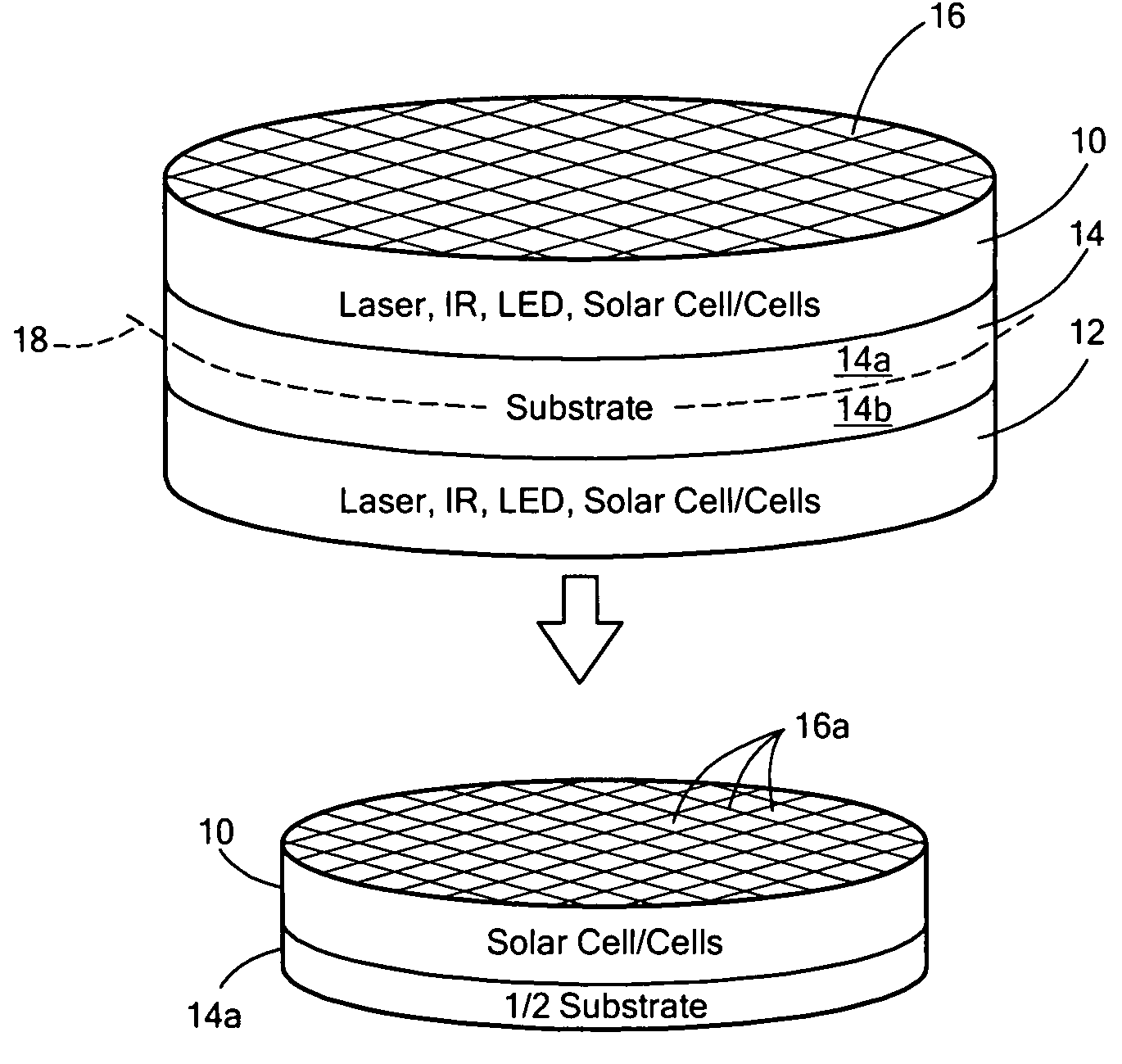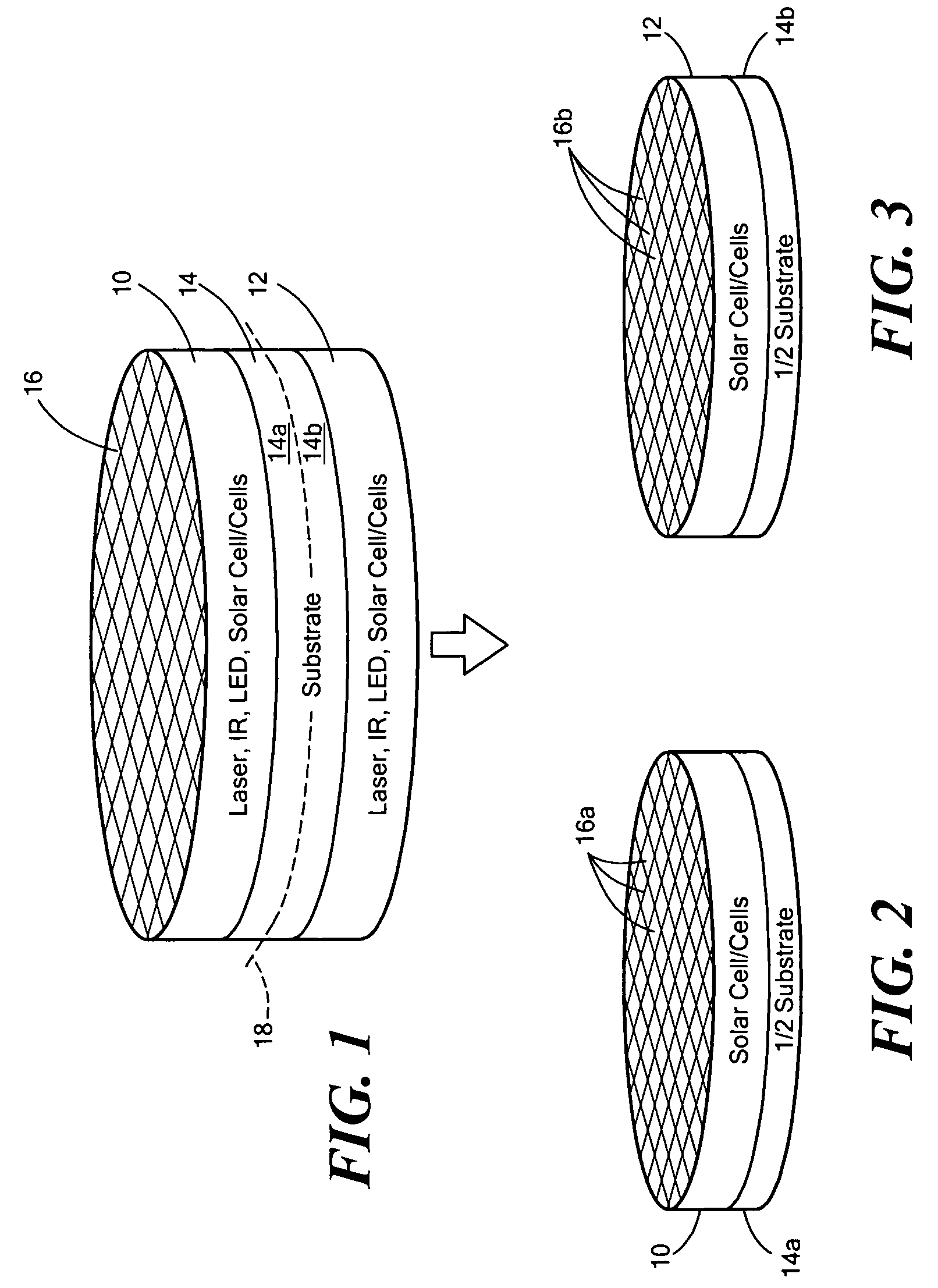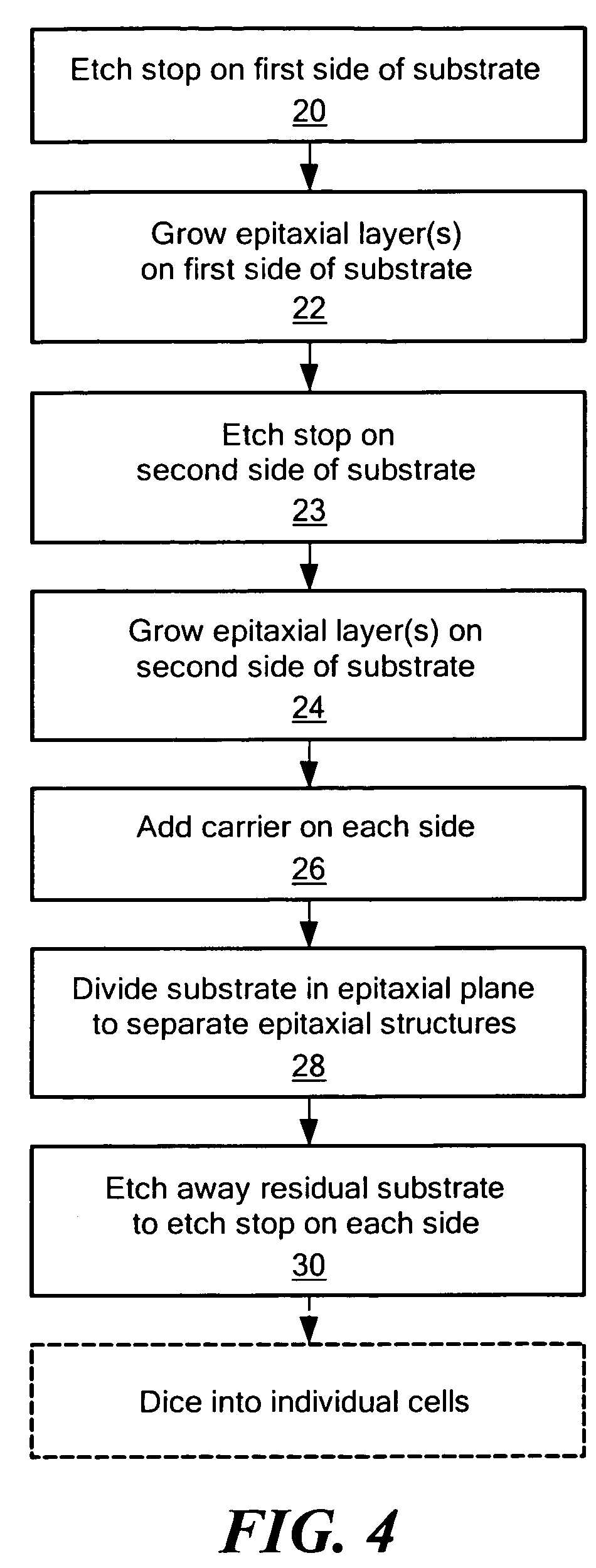Method of fabricating epitaxial structures
a technology of epitaxial structures and substrates, applied in the direction of sustainable manufacturing/processing, final product manufacturing, led's, etc., can solve the problems of difficult processing and handling of individual cells so formed, poor and inconsistent performance, and high cost of fabricating epitaxial structures. , to achieve the effect of simple and direct removal of substrates, and reduced substrate requirements
- Summary
- Abstract
- Description
- Claims
- Application Information
AI Technical Summary
Benefits of technology
Problems solved by technology
Method used
Image
Examples
Embodiment Construction
[0014]Aside from the preferred embodiment or embodiments disclosed below, this invention is capable of other embodiments and of being practiced or being carried out in various ways. Thus, it is to be understood that the invention is not limited in its application to the details of construction and the arrangements of components set forth in the following description or illustrated in the drawings. If only one embodiment is described herein, the claims hereof are not to be limited to that embodiment. Moreover, the claims hereof are not to be read restrictively unless there is clear and convincing evidence manifesting a certain exclusion, restriction, or disclaimer.
[0015]The method of fabricating epitaxial structures according to this invention in one embodiment employs bi-facial epitaxial growth where both the bottom and the top of the semiconductor wafer or substrate is processed into separate epitaxial structures. The notion is to grow epistructures on one side of the wafer or subs...
PUM
 Login to View More
Login to View More Abstract
Description
Claims
Application Information
 Login to View More
Login to View More - R&D
- Intellectual Property
- Life Sciences
- Materials
- Tech Scout
- Unparalleled Data Quality
- Higher Quality Content
- 60% Fewer Hallucinations
Browse by: Latest US Patents, China's latest patents, Technical Efficacy Thesaurus, Application Domain, Technology Topic, Popular Technical Reports.
© 2025 PatSnap. All rights reserved.Legal|Privacy policy|Modern Slavery Act Transparency Statement|Sitemap|About US| Contact US: help@patsnap.com



